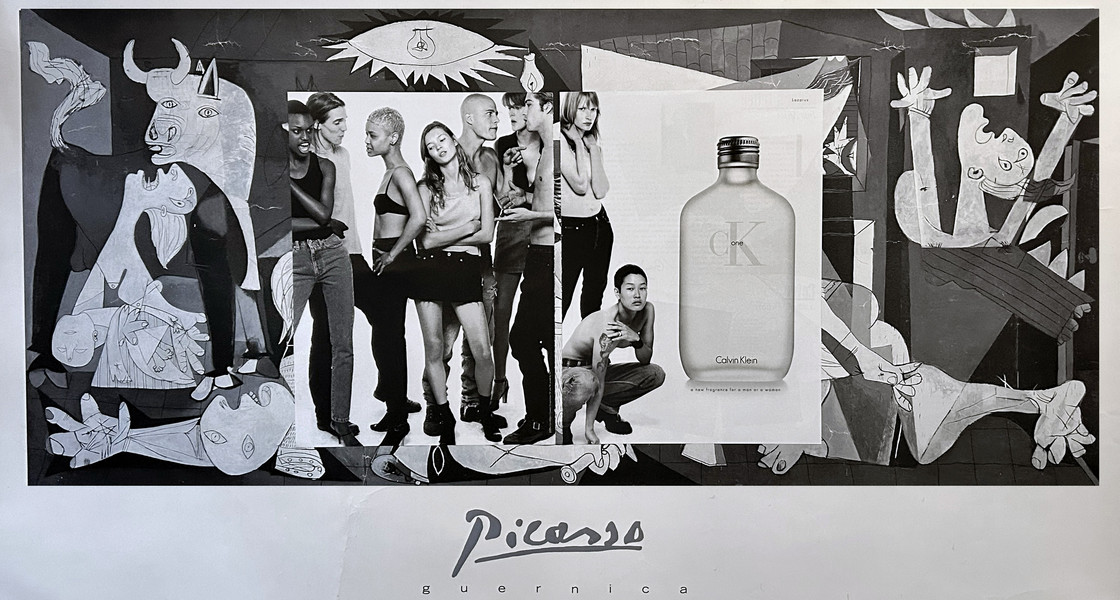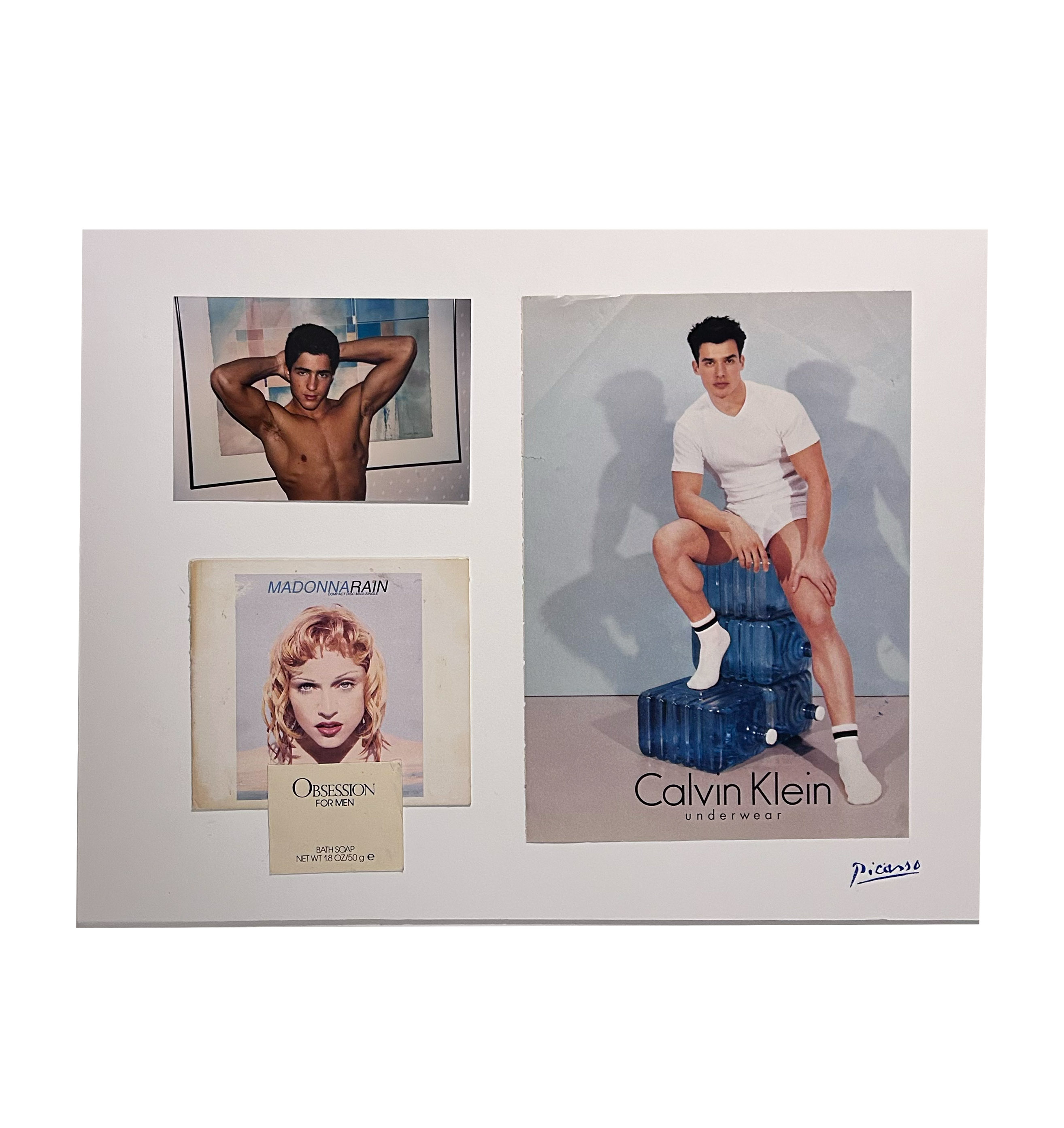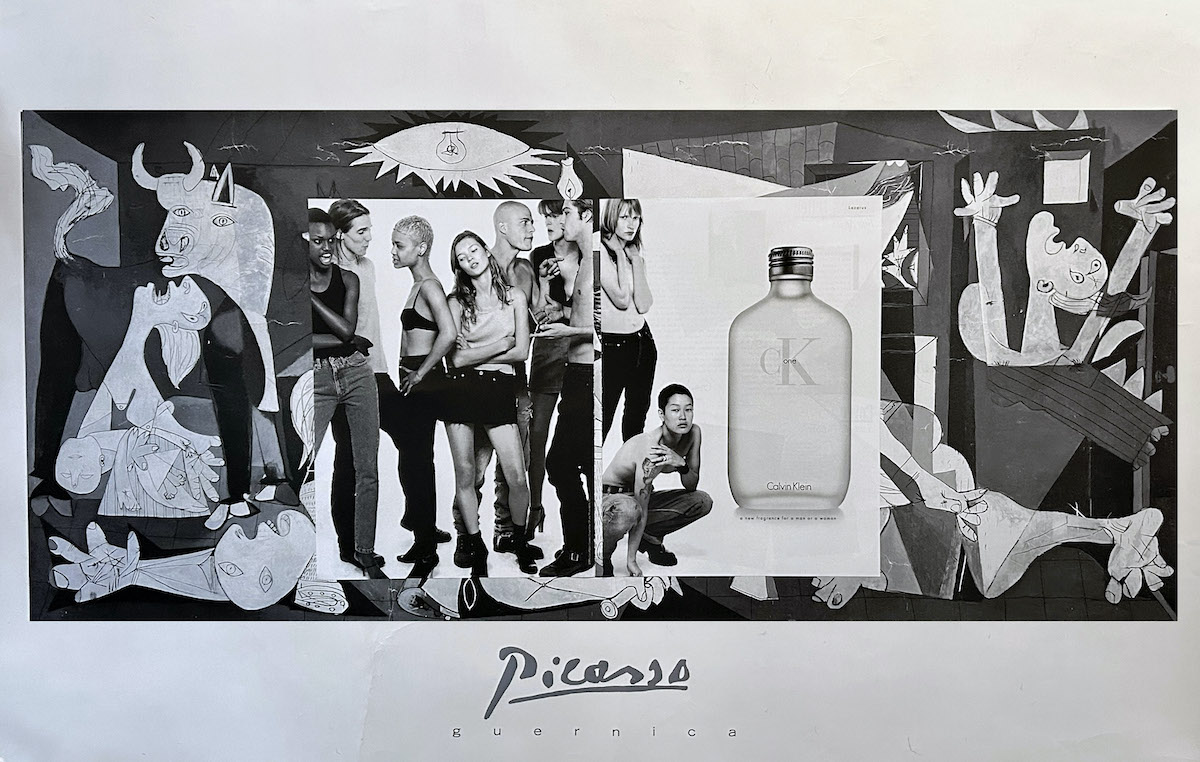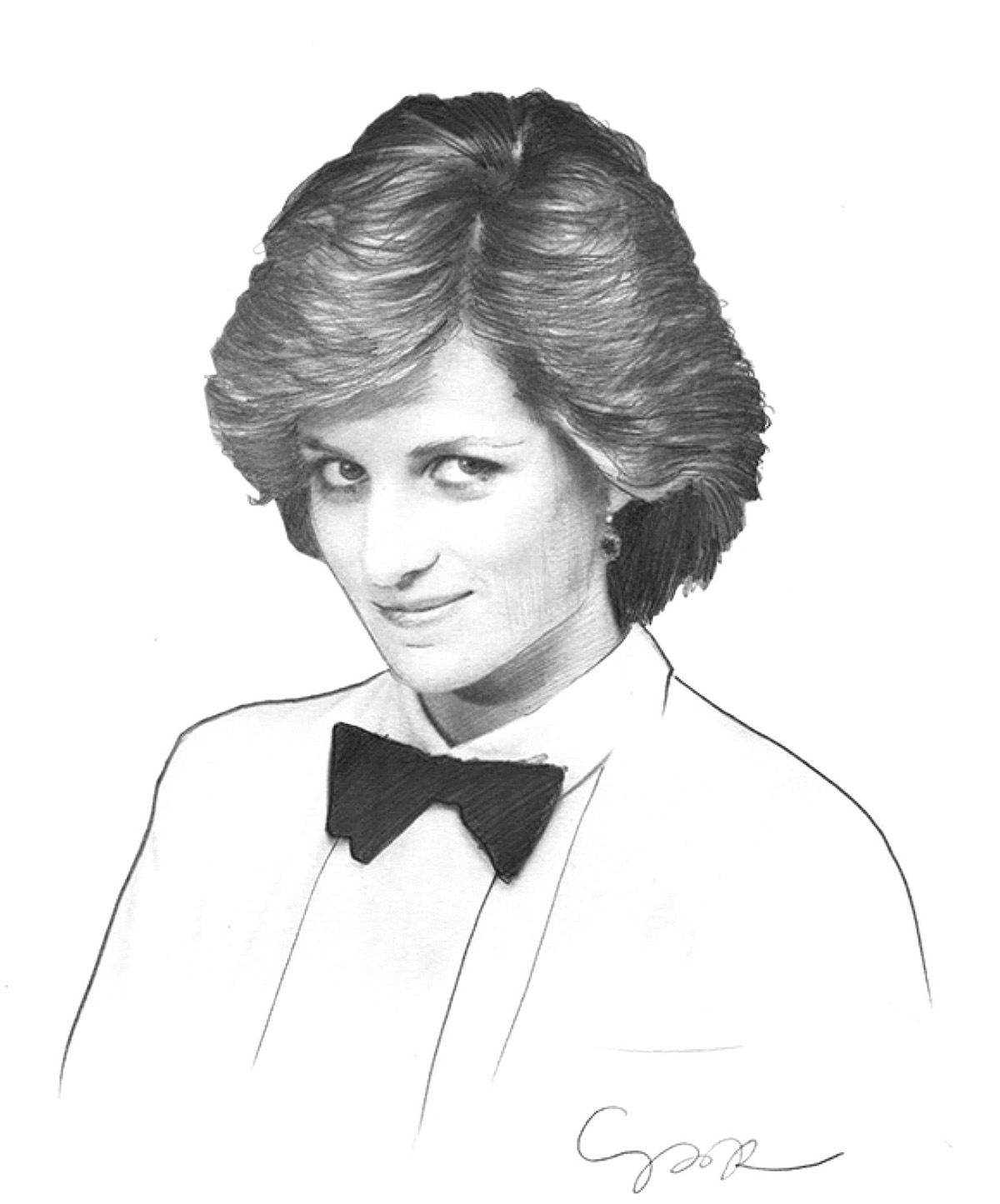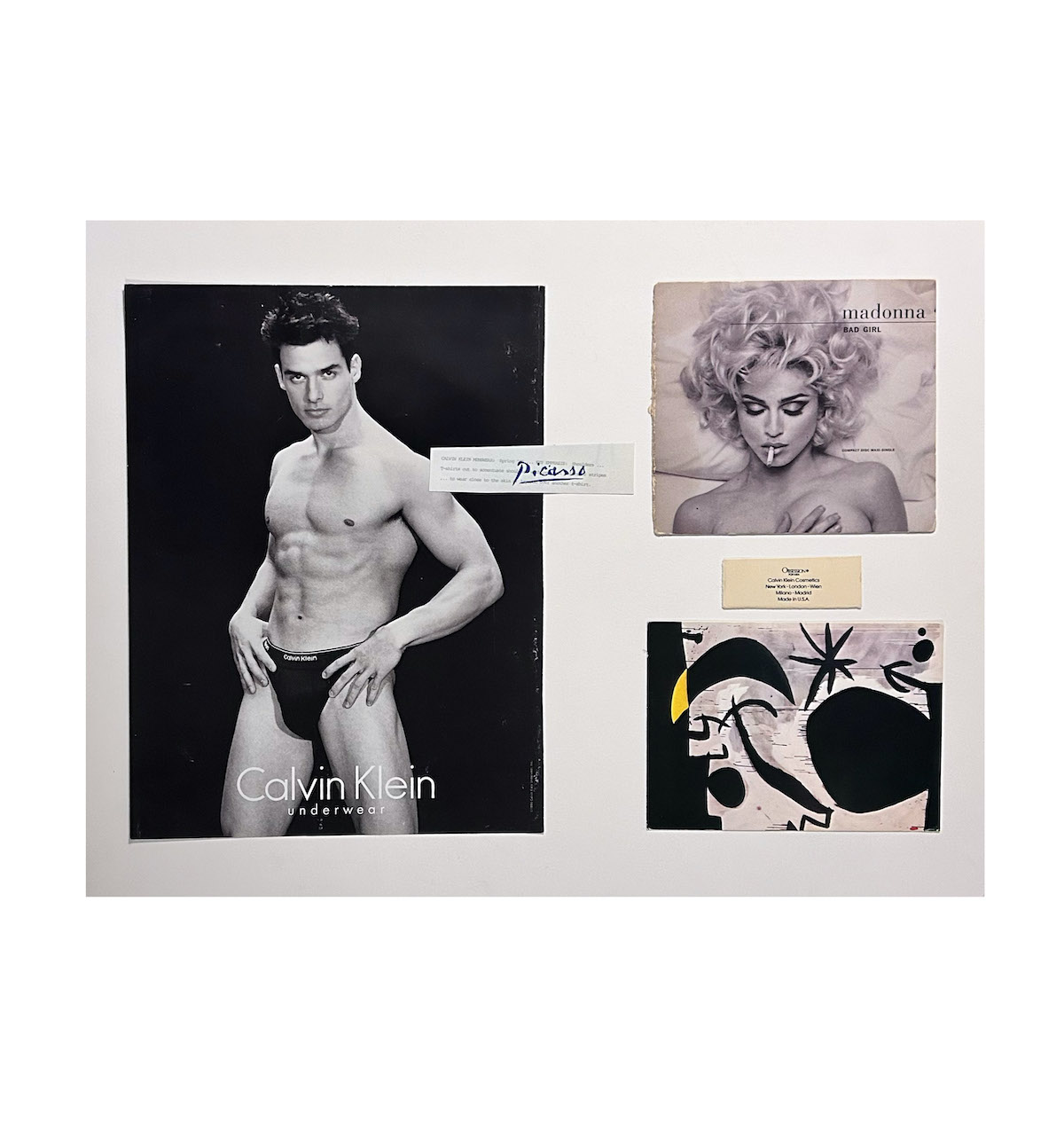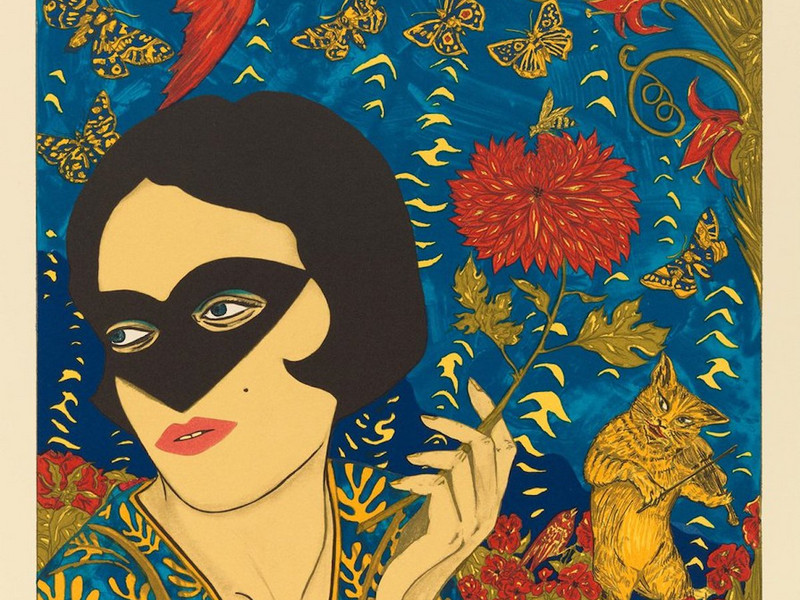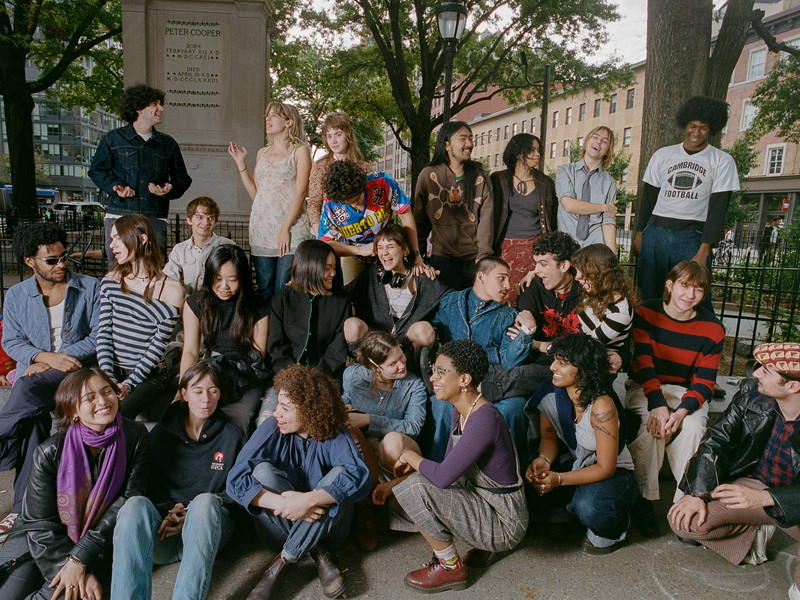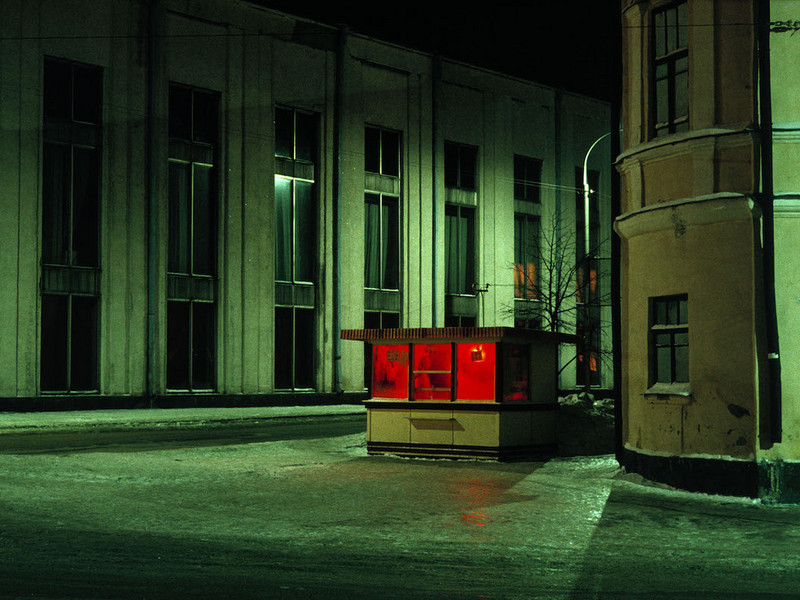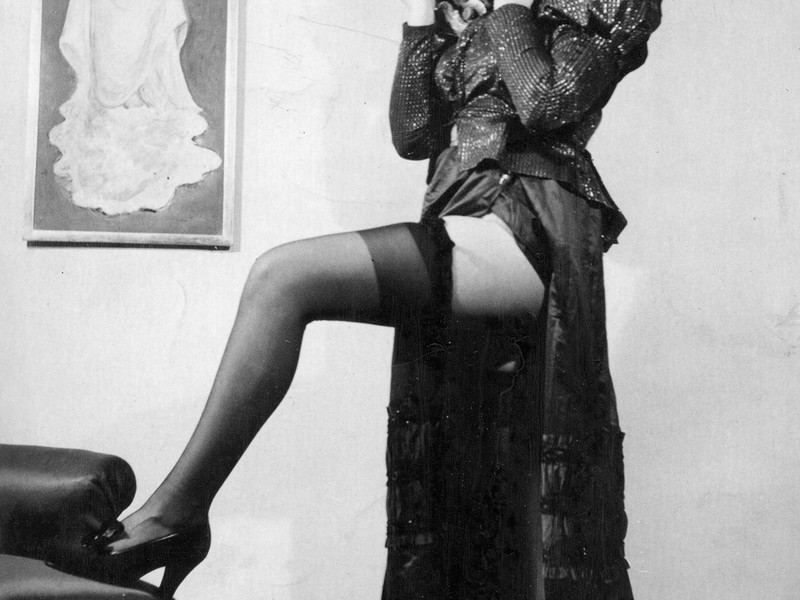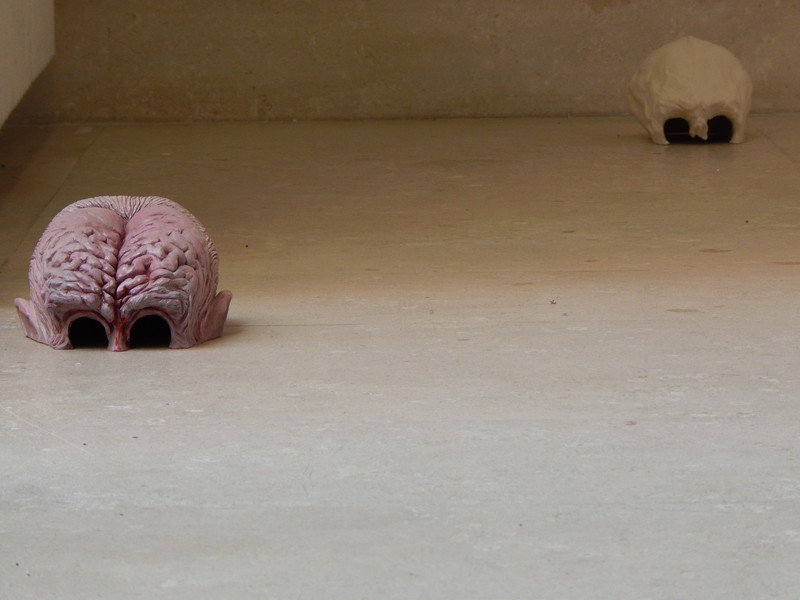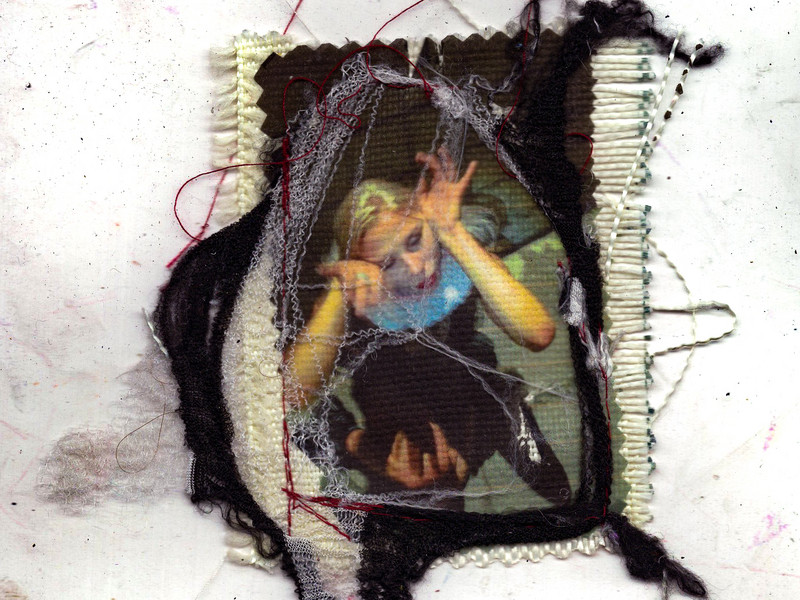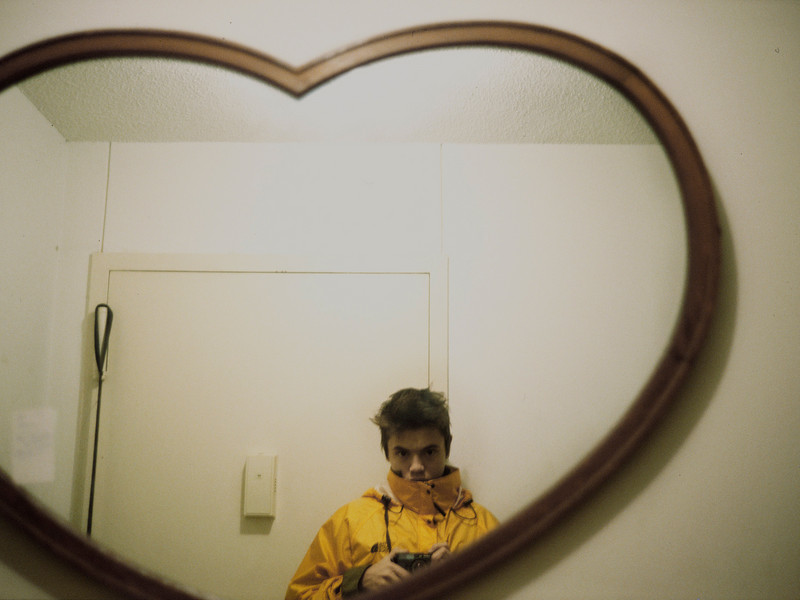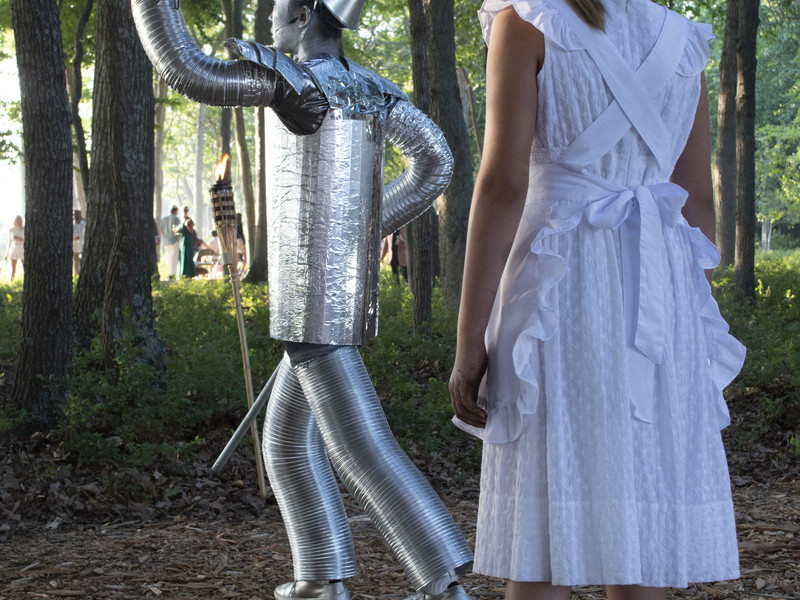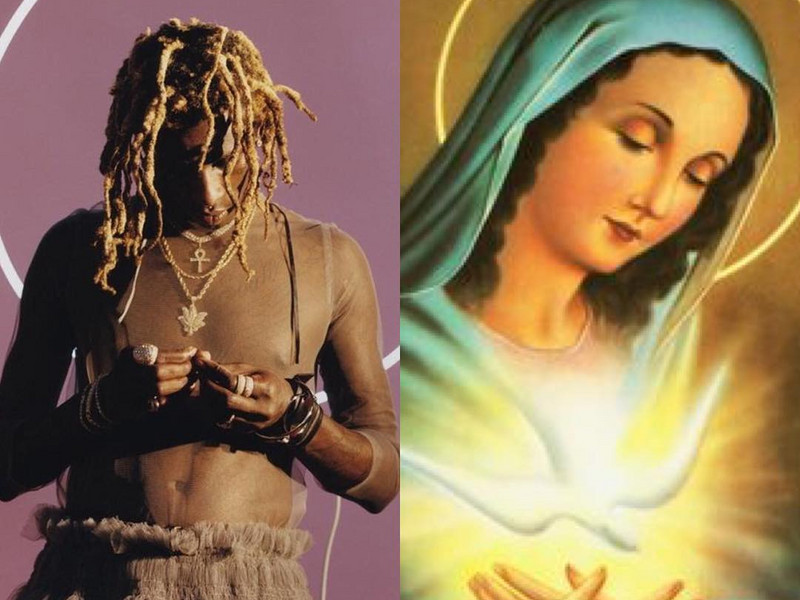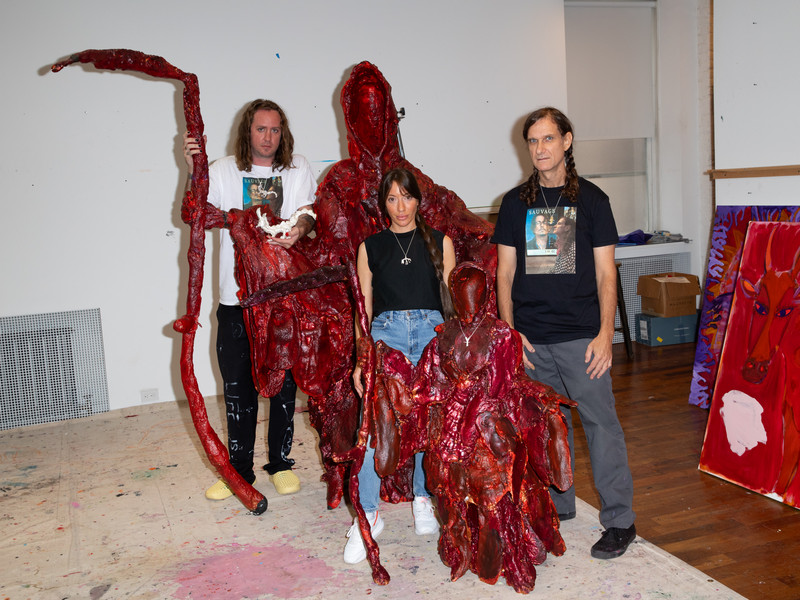Read between the lines (and the Dianas)
Not totally inexplicably, this commercial and others like it left a mark on me as a queer young person. Growing up, the idea of what was queer and what was not was something incredibly charged and personal — something I first experienced in both the magazine aisle of the grocery store and the men’s underwear section of the department store and, later, online.
The truth is, the weight and meaning of “queer” and its many synonyms, casual, complementary, or pejorative, carries a complex and lengthy story for each of us that find a home in the terminology. Connected deeply to the roots of culture both obscure and pop-friendly, connoting diverse meanings and impacts across cultures, locales, and time periods, the idea that something is queer is, for many, entirely subjective and deeply connected to one’s lived experience and identity.
For the pastiched work of New York-based artist Silvia Prada, queerness is ultimately something to be experienced through context and designation. It is through this lens that she captures queered imagery: visuals that aren’t always explicitly “queer”, but are transformed — through juxtaposition, reboot, or cultural doption — into queer iconography.
Prada’s work, both productive and archival, is indicative of the longstanding historical context of the term “queer”: that of other-ness, underground subculture, and transgression. Experiencing her work, which ranges from drawing to collage to sculptural assemblage, queerness becomes something intimate and provocatively secret — something to be read inbetween the lines.
I met with Silvia over Zoom to learn more about her work and recent exhibition, Obsessions, at VISO Project in Brooklyn, which featured drawings of Princess Diana, found imagery from homoerotically tinged fashion editorials, and other pieces from Prada’s archive, along with selected works by her friend and collaborator Coco Capitán.
I like to keep these conversations very free flowing — I hope that's ok. I have some different questions in mind and I'd love to hear about some of the points you may haven't had a chance to speak about yet ... But first I'd just love to hear about you, your life in general. You're from Spain originally, right?
Yes, I was born in Spain. I came to New York for love, in 2010. I met a Hawaiian woman — she was a singer for Hercules and Love Affair.
Oh my god, yeah! I love them.
She was one of the first producers of the band. I met her in Barcelona, and we fell in love and I moved here. And we're still very good friends. We're separated, but we're still married. So that's what brought me to New York: love.
I always love hearing people's New York origin story. These stories seem just as important as the story of their work, their creative work.
I've been reading about your work and thinking a lot about this idea of collage — not only like in terms of 2D collage, but also assemblage, with these kinds of artifacts. Could tell me a little bit more about your journey to working in this manner: assembling artifacts of culture in a space to create a presentation or an installation. Is that how you've always worked?
Yeah. Being mostly a drawing artist for many years, part of my process is collecting things. So the way I work in a drawing is also collage, but at some point, I was like, "I need more 3D expression."
Collecting is such an obsessive process for me. [I was thinking] like, "Okay, this is all my history. This is the way I've been obsessively putting together everything that created my identity as an artist and also as a person and also as a queer artist."
So I felt like collage should be my new media because it's richer for me. My creative process shifted to something more collaged because I felt it was the language that I wanted to be using ... the language that I feel more comfortable working with right now.
Do you feel like the way that you've approached this kind of assemblage has shifted over time or with the rise of the digital age that we're living in? Has that affected the way that you go about it at all?
Yeah, definitely. I feel like the work I do is almost political. Observing how queer culture is written by brands and by mainstream culture right now — I feel it's wrong. Looking back and seeing what queer culture was historically representing — it was all about feeling different, right?
So I think [my work] is about manifesting something that I'm missing. I need to look back and see what history says about that. And I feel that, when I was young, I started collecting all of this because I was outcast, from straight culture, pop culture, and also lesbian pop culture. So I felt like all of these homoerotic images I started collecting were more like my identity, which is also rebellious.
I wasn’t comfortable with anything besides that: the androgyny that I found in this advertising, or in Lady Diana's everyday, rebellious looks. So I was like, "Okay, I don't need validation from men or women." And that's actually like something that I can define as queer.
Princess Diana plays an important role in Prada’s exhibition, portrayed with a mischievous smile in a series of drawn portraits. For the artist, the queerness of Diana seems to lie outside of the way one might view someone like Beyonce or Lady Gaga, but rather as an icon of androgyny. A downtempo alternative or sly rejection of the trappings of the gender binary, in a time where her fame came from her role in one of the most heteronormative institutions known to history: the British monarchy.
Here the importance of queerness in context is displayed: though her “tomboy” style is wholeheartedly embraced by the Hailey Biebers of today, in its time it was a middle finger to the social pressure projected on Diana by the world around her.
Yeah this exchange — the "permission" of mainstream culture, to queer artists, queer creators of different kinds ... maybe there's something lost in the process, in the way that queerness exists in opposition to capitalism, to heteronormativity, to the gender binary.
I need to acknowledge that representation is incredibly important, especially for marginalized communitites and young people, but there should be more ways for representation outside of capitalism.
Has your relationship with your work also shifted if we think about the movement from like the heyday of print, especially in the 90s, to the digital age we're living in now?
Everything is always a cycle. I feel like now we live in such a digital era like — also with artificial intelligence — where I think we're gonna go back to just basics.
Right now all of the fashion advertising is all about the product, right? And if you look back, [the advertising had] something you can dream about. That's what I see in the Calvin Klein One campaign.
No one called that queer ever, you know — no one called that gay culture: it became gay culture itself, with time. So I feel it's like that moment — that this could happen again, when things slow down.
I'm always very positive of what's coming.
It's good to hear that. I feel like our generations can be so disillusioned with younger generations, but I feel like younger generations are so much more expansive and open-minded and mature than I was at that age. It makes me feel optimistic.
I also feel like it's multi generational, like the relationship between Gen Z and Gen X is very close. I feel like there's something in common there.
It's all very interesting, thinking about what comes next. You talked earlier about homoerotic imagery — how did you come to be attracted to working with that kind of imagery?
I grew up in my father’s hair salon — a hair salon for men, so I grew up fascinated by men's beauty. And again, my identity was not really fitting in anywhere. I started to collect magazines very early, like Interview magazine, even in its transition from Andy Warhol. My dad had those types of magazines in the hair salon. I was a gay kid and attracted to women but also attracted to that type of [homoerotic] imagery.
What other cultural touchpoints feed into your work? Outside of those sort of monolithic moments like Calvin Klein and Diana?
I'm an obsessive collector — not only magazines, but also like all of the 70s and 80s Physique Pictorials or any kind of magazines that had that early homoerotic presence.
There's something really wonderful about a "dirty" magazine, that doesn't exist in the same way anymore.
Totally — the last thing we had like that was BUTT magazine... But now you see something happening, after COVID, with OnlyFans — it's all so normalized. And I like that. You know, and in magazines like Gayletter.
There's a lot of like pornography there. We need to have a moment where it is all super normalized, but in a way that makes a statement. [Where] it has like a soul, yeah?
